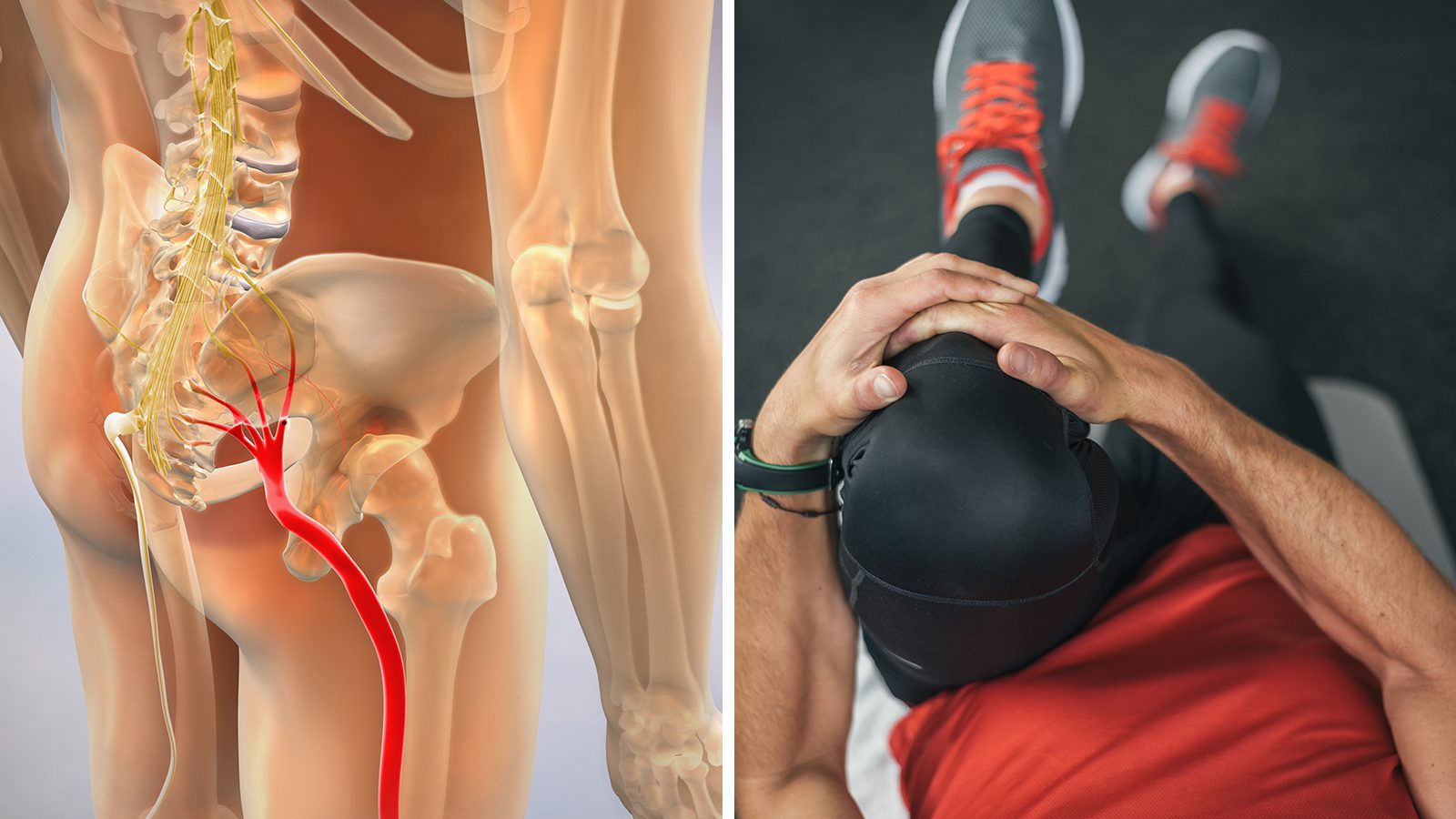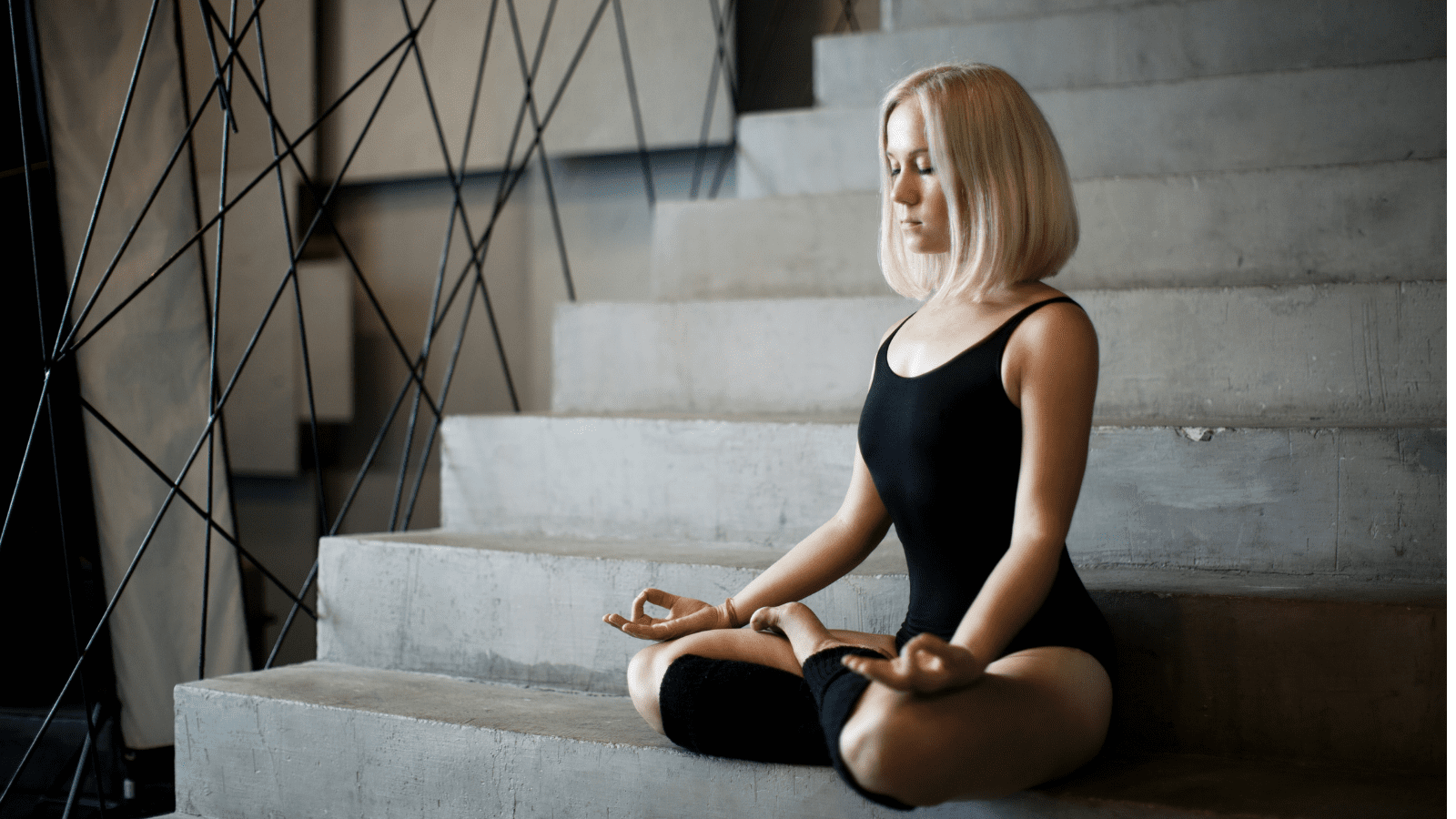When you have sciatica pain, your whole body is affected. The constant discomfort in your lower back can make even the simplest tasks difficult. The good news is that you may benefit from stretching exercises.
Ten Daily Stretching Exercises for Sciatica Pain
According to an article published by the National Library of Medicine, sciatica is a debilitating condition that affects the root of the sciatic nerve. It can cause tingling and numbness in your hands and feet and severe back pain. Many people experience chronic cycles of flare-ups and periods of relief.
Stretching exercises can loosen the muscles surrounding your sciatic nerve and help reduce inflammation. You can do them as a separate session or incorporate them into your regular routine. These are ten exercises for sciatica never to ignore.
1. Scissor Stretch
Sometimes, achy hamstrings can make sciatica pain even worse. This easy exercise gently stretches your hamstrings and relieves pressure on your sciatic nerve. Consider doing a few of these stretches after a long day at work. Here’s how:
1. Stand on your mat with your left foot about three feet in front of your right foot. Doing this exercise in front of a full-length mirror may help you properly position.
2. Now, bring your hips forward and pull back your shoulders.
3. Try to keep your right hip from being farther along than your left one. Put your hands on your hips.
4. Smoothly bend at your waist to bring your torso a bit over your left leg. Try to balance your weight on your left leg and keep your back as straight as possible.
5. Hold this position for five to ten breaths and return to the starting position.
6. Switch and repeat these steps for your right leg. Do three to five reps for each leg.
2. Thigh Adductor Muscles Stretch
According to an article published by the National Library of Medicine, your thighs depend on strong muscles called adductors to flex and rotate. If these muscles are weak, it can lead to painful sciatica pressure. This exercise uses gentle stretches to strengthen your adductors. Here’s how:
1. Sit on your mat comfortably, and you must spread your legs out in front of you and apart as far as you comfortably can.
2. Place both hands flat on the mat in front of you. Try to bend your torso slightly toward the mat.
3. Next, lean forward until your elbows touch the mat.
4. Try to hold this position for ten to fifteen breaths, stopping if you have any pain.
3. Standing Piriformis Stretch (Feels So Good for Sciatica Pain!)
The piriformis is a small muscle behind your glutes, and your sciatic nerve runs right through its center. If your piriformis is weak, injured, or strained, it can cause sciatica pain. Try these standing stretches to strengthen this essential muscle. Here’s how:
1. Stand naturally on your mat and place your right leg over your left knee. If necessary, use a sturdy chair to hold to keep your balance.
2. Gently bend your left leg. Lower your hips to an approximate 40-degree angle. Imagine that you are making the form of the number four.
3. Now, bend at your waist until your arms swing down. Keep your back as straight as you can. Hold this position for 30 to 60 breaths.
4. Switch to your right leg and repeat the steps.
4. Seated Stretch
Do you often have sciatica pain when you’re seated? You can do these simple stretches in a comfortable chair at home or work. Start with whichever side of your body where the pain is worse. Here’s how:
1. Relax comfortably in a sturdy chair with your back against the chair.
2. Place your right leg across your left knee and keep it parallel to the mat.
3. Next, bend your chest forward while holding your back as straight as possible. Bend as far as you can without causing any pain. If you feel any discomfort, stop immediately.
4. Hold this position for fifteen to thirty breaths.
5. Return to the starting position, switch sides, and repeat the stretch with your left leg.
5. Standing Hamstring Stretch
Lower back pain and sciatica are often related to hamstring issues. All you need is a sturdy chair and a little space to stretch. These stretches can be performed in the morning and at night. Here’s how:
1. Place a sturdy chair in front of you, or you could do this stretch on a staircase. It should be no higher than the level with your hips.
2. Next, stretch your left foot onto the chair’s seat while keeping your legs and toes as straight as possible. You can slightly bend your knee in case it sometimes hyperextends.
3. Gently bend your body slightly forward toward your elevated left foot. Stretch as far as you can without feeling pain or discomfort. You should feel your leg, hips, and lower back stretch.
4. Now, lower your left hip smoothly to complete the position. Feel free to use an exercise band over your thigh and hip if it makes the movement easier.
5. Hold this position for fifteen to thirty breaths and return to the starting spot. Repeat the steps for your right side.
6. Sitting Spinal Stretch for Sciatica Relief
When the vertebrae in your spine compress, you can feel pressure in your lower spine and have sciatica pain. With this stretch, you can help decompress your spine and soothe your sciatic nerve. It’s also beneficial for your hips and legs. Here’s how:
1. Sit on your mat comfortably with both legs stretched straight out and your feet pointing upward.
2. Bend your left knee. Now, flatten your left foot on the mat outside your right knee.
3. Place your right elbow outside your left knee and gently turn your upper body toward the left. Hold this position for fifteen to thirty breaths. Return to the starting position.
4. Your goal is for three repetitions, then switch to your ride side and repeat the steps.
7. Flat Stretches Relieve Sciatica Pain
Flat stretches can benefit your lower back, hips, and legs. Support your behind with a pillow if needed. Remember that your goal is to stretch and strengthen, not cause discomfort or pain. Here’s how:
1. Lie flat on your back with your legs stretched out, and your feet pointed toward the ceiling.
2. Bend your left leg while clasping both hands around your knee.
3. Pull your left leg gently across your body toward your right shoulder. Only draw your knee as far as you can without discomfort.
4. Hold this position for about thirty breaths. You’ll feel a slight stretch in your leg muscles and lower back, but it shouldn’t be painful.
5. Give your knee a little push to return to the starting position.
6. Try to complete three repetitions. Switch to your right leg and repeat the steps.
8. Forward Pigeon Pose
This yogic pose opens your hips and promotes mobility and flexibility. Prolonged sitting can cause tightness in your hip flexors and lower back, resulting in sciatica pain. Practicing this pose can help ease the pain. Here’s how:
1. Position yourself on all fours on your mat.
2. Raise your left leg on the mat in front of your body. Keep your right leg horizontal to your body and close to the floor.
3. Your left foot should be in front of your right knee as your left knee stays to your left.
4. Next, extend your right leg behind you on the mat. Your toes should be pointing backward.
5. Gradually shift your body weight from your arms to your legs. Sit up as straight as you can with your hand on both sides of your legs.
6. Inhale deeply for a second, then slowly exhale while leaning your upper body toward your left leg.
7. Use your arms to support your body weight as much. Return to the starting position.
8. Your goal is three to five repetitions.
9. Switch to your right side and repeat the steps.
9. Modified Lotus Pose
The Lotus Pose is probably one of the most recognizable yogic poses. Not only does it bring your mind into the present, but it stretches your back and hip muscles. You can do this pose flat on your mat or on a comfortable cushion. Here’s how:
1. Sit comfortably on your mat or a small cushion with both legs in front of you.
2. Gently bend your right leg. Now, place your right ankle on your left knee.
3. Bend your arms at the elbows as you bring your thumbs and middle fingers together. This is the classic lotus pose.
4. Now, lean your upper body forward to reach toward your right thigh.
5. Hold the position for fifteen or thirty breaths, and then you should return to the lotus pose.
6. Do three to five repetitions, switch to your left side, and repeat the steps.
10. Reclining Pigeon Pose
Here’s another pose that you may recognize if you practice yoga. It’s also an excellent stretching exercise to add to the forward pigeon pose. It relaxes your hips and relieves the stress on your sciatic nerve. Here’s how:
Lie flat on your back and raise your right leg to form a 90-degree angle. Clasp your hands and lock your fingers behind your thigh.
1. Lift your left leg and position your right ankle against the top of your left knee.
2. Hold the position for three to five breaths and return to the starting position.
3. Do five to ten repetitions, then switch and repeat the steps for your left leg.
Final Thoughts of the Sciatica Stretches to Reduce Lower Back Pain
You needn’t let sciatica pain stop you from getting the most out of life. Consider adding these easy exercises to your daily regimen. They can strengthen muscles in your back and hips and bring you some much-needed pain relief.
















 Community
Community

